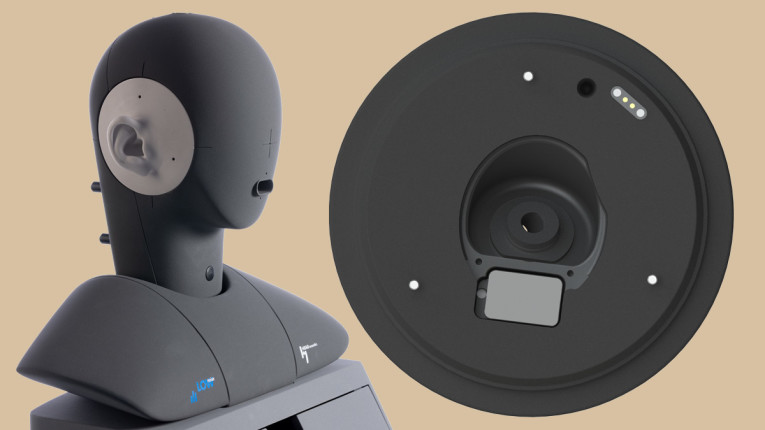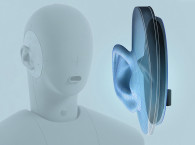
Headset manufacturers increasingly consider noise-free bone conduction to improve speech transmission in their in-ear headsets. Especially in noise-filled environments, the voice of the person talking can be better separated from ambient noise or competing talkers' voices if in-ear headsets detect bone conduction. Bone sound detection, therefore, serves as the basis for optimally suppressing noise and thus improving speech quality, especially in noisy environments.
Sophisticated technologies such as echo cancellation and other signal processing in in-ear headsets also benefit from perfect voice recognition. Assuming a good bone conduction recording, the direct transmission of the bone conduction can lead to a speech signal that has already been optimally suppressed in the low-frequency range.
However, even though some manufacturers of modern in-ear headsets already use bone sound sensors, they are squandering much of the potential that their use offers since, until now, no suitable measurement technology that holistically measures such products has been available for testing and optimization. They have had to perform tests laboriously with test subjects, and the results are difficult to reproduce. Verifying the design under laboratory conditions, especially in test houses, has not been possible – so far.
This is where HEAD acoustics comes in with realistic testing of in-ear headsets with bone conduction sensors in the transmitting direction (i.e., the direction in which the user's spoken signal is transmitted). For this purpose, HEAD acoustics offers the new artificial head HMS II.3 ViBRIDGE with the HEL/HER 4.4 ViBRIDGE artificial ears, equipped with a vibration generator (actuator) – comparable to the average bone sound excitation in humans.

An Holistic Solution
To get to the bottom of the question "Which frequency components of the voice reach the inner ear via the bones, and at what volume?" HEAD acoustics carried out numerous measurements with human talkers. "Bone conduction sensors in in-ear headset replicas allow us to measure how bone conduction "sounds." These measurements give us a good overview of the individual differences for each talker and allow us to determine the average bone sound transfer function. We reproduce this with an actuator in the artificial ear of the artificial head and obtain a perfect simulation that corresponds to the results of the measurements from our tests," HEAD acoustics explains.
This means that with HEAD acoustics ViBRIDGE, manufacturers can test their in-ear headsets with structure-borne sound sensors holistically, correctly, reliably, and reproducibly in the lab. For the simulations, manufacturers can use the HMS II3 ViBRIDGE artificial head and the HEL/HER 4.4 ViBRIDGE artificial ears, as well as the 3PASS lab software for automated background noise simulation, in combination with the labBGN ACQUA hardware platform, the labCORE measurement and analysis software to control the entire test sequence, and finally using the HQS-ViBRIDGE test suite for testing and optimizing in-ear headsets.
"Only with a standardized, complementary simulation of airborne and structure-borne sound components generated by the human voice is it possible to evaluate and optimize in-ear headsets in various conversational situations objectively, holistically, and reproducibly.
Do you want to learn more about bone conduction and headset testing? Visit the updated ViBRIDGE area of HEAD acoustics website.
HEAD acoustics GmbH is one of the world's leading companies offering holistic sound and vibration analysis solutions with global recognition and expertise in developing hardware and software for measuring, analyzing, and optimizing voice and audio quality. HEAD acoustics' range of services covers sound engineering for technical products, investigation of environmental noise, speech quality engineering, consulting, training, and support.
www.head-acoustics.com







